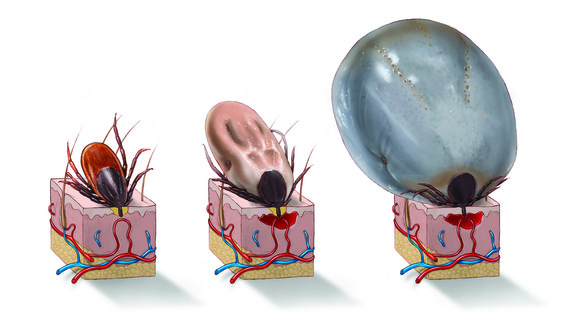| Tuesday, June 4, 2024  The deer tick, Ixodes scapularis, feeds for multiple days. The first day the tick produces a cement-like compound to keep its mouthparts embedded in the skin of its host. Next the tick takes in small amounts of blood and slowly begins to expand its body size. The final rapid engorgement stage sees the tick sometimes expanding 100 times its body weight. Credit: Ryan Kissinger/NIAID Cases of human disease caused by tick bites have increased over the last decade, but climate change and greater numbers of the arachnid parasites hanging on grass and brush aren't the only reasons. A new commentary in JAMA Internal Medicine from NIAID and Tufts University identifies several factors contributing to the rise in cases: better tests to diagnose illnesses; an increasing population of older, active people who are apt to be in areas prone to tick bites and to seek medical care when ill; urbanization and increasing numbers of "backyard wildlife" that support tick populations, such as deer. The authors suggest that increased case trends will continue – but note that vaccines for Lyme disease are in advanced clinical trials. As for climate change: It is a factor, but more study is needed to evaluate impacts. Their advice for remaining healthy in tick environs: use repellents, look for ticks on clothing and the body, and promptly remove any that are attached to the skin. National Institute of Allergy and Infectious Diseases | National Institutes of Health | | | |
No comments:
Post a Comment